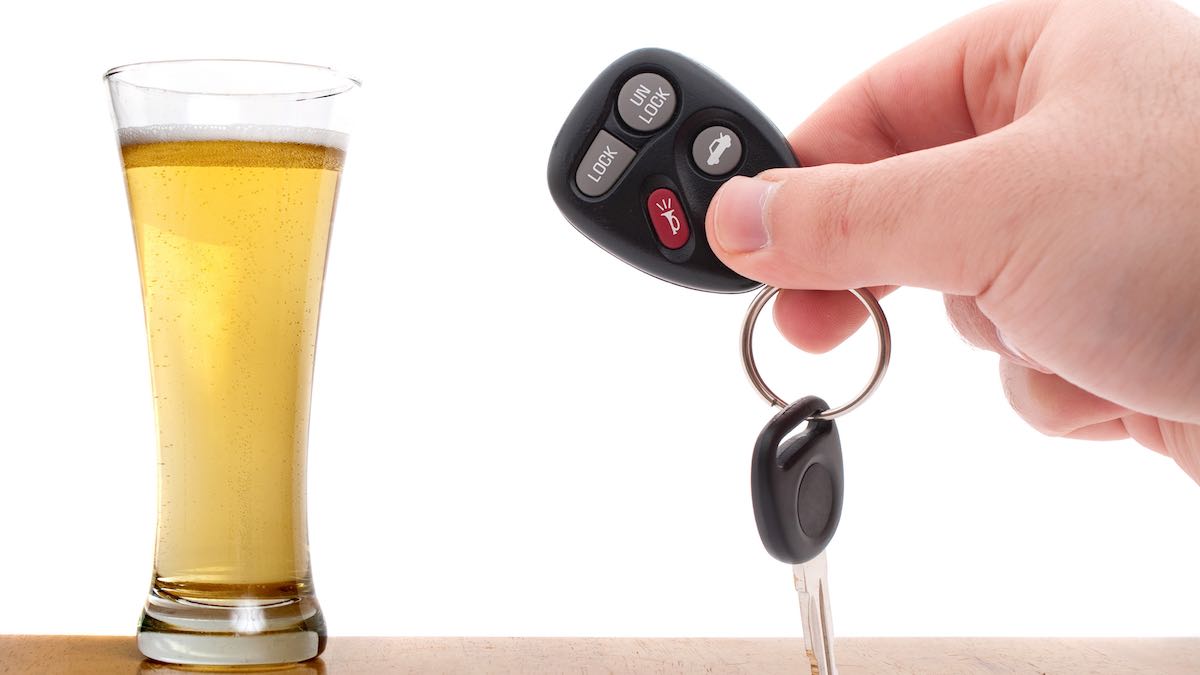
If you are arrested for DUI, at some point in the process of going to court hearings and dealing with the Washington State Department of Licensing (DOL), you are almost certain to need to get an “alcohol assessment” (also called a “dui assessment”, “alcohol/drug assessment” or “alcohol and drug evaluation”).
What is an Alcohol Assessment?
An alcohol assessment is an evaluation conducted by one of the many substance abuse treatment agencies accredited by the state. These agencies have you respond to one or more written questionnaires and then interview you. They also review the police report, your driving record and the results of a urinalysis. They then prepare a written report on whether you have a substance abuse problem with alcohol and/or drugs. The agency will assess the extent of any problem and make a recommendation as to the amount of counseling you should receive.
There are probably hundreds of agencies in Washington state and they are located in almost every city and county. Most of the agencies are independent businesses (some have multiple locations), but some agencies are affiliated with nonprofit organizations, such as government agencies, hospitals, Native American tribes and churches.
Why do you Need an Alcohol Assessment?
A DUI assessment is needed for several reasons.
As an initial matter it should be noted that if you go to trial and the jury finds you Not Guilty, you don’t need an evaluation for court. (Although you still might need one if a Department of Licensing hearing – which proceeds on a separate “track” – results in a license suspension).
However, if a DUI court case ends in almost any way other than dismissal, an assessment is usually needed.
First, an evaluation is needed because if you resolve your case with a plea bargain to a reduced charge of Reckless Driving or Negligent Driving in the First Degree, the judge will almost always order you to attend an alcohol information class and a victim impact panel class and to obtain an assessment and complete more extensive counseling if it is determined to be appropriate.
An alcohol information class is a short class (typically 8 hours) which typically costs $100 to $200. In practice, a plea agreement with the prosecutor on a DUI case involves getting an assessment unless the facts of your case are extremely favorable. If you are convicted of a DUI the judge is required by statute to order that you obtain an assessment. See RCW 46.61.5055(8) & RCW 46.61.5056.
You also need an evaluation because your lawyer will use it when he or she negotiates with the prosecutor for a reduction of the charge. As you can imagine, the ways that the assessment can be used by your lawyer are numerous and depend on all of the facts of the case. For example, if your breath test reading is relatively low, and the evaluation says that you do not have a problem with alcohol, your lawyer might argue to the prosecutor that you should get a favorable reduction of the DUI charge because you are just a “social drinker” and not a threat to the public.
Keeping your driver’s license or getting it back may be another reason that you need an alcohol evaluation. As mentioned above, on a “track” separate from the court case, the Department of Licensing will usually notify you of its intent to suspend your license for some period. If your license is suspended on that separate track or because of a court conviction, the Department of Licensing will require that you obtain an assessment and provide proof of enrollment in a recommended program. See RCW 46.20.311, RCW 46.61.5056(2).
How is an Alcohol Assessment Conducted?
The Washington State Department of Social and Health Services (DSHS) regulates substance abuse treatment and the evaluation process. DSHS regulations provide that an evaluation for substance abuse or other health problems has to be conducted in person and may include:
- Identifying information;
- Presenting issues;
- Medical provider’s name or medical providers’ names;
- Medical concerns;
- Medications currently taken;
- Mental health history;
- Substance use history, including tobacco;
- Problem and pathological gambling history;
- An assessment of any risk of harm to self and others, including suicide, homicide, and a history of self-harm;
- A referral for provision of emergency/crisis services must be made if indicated in the risk assessment;
- Legal history, including information that a person is or is not court-ordered to treatment or under the supervision of the department of corrections;
- Employment and housing status;
- Treatment recommendations or recommendations for additional program-specific assessment; and
- A diagnostic assessment statement, including sufficient data to determine a diagnosis supported by the current and applicable Diagnostic and Statistical Manual of Mental Disorders (DSM-5).
See WAC 388-877-0610 and WAC 388-877-0820.
To state what will happen at an evaluation in perhaps plainer English: In addition to being interviewed, you will be given one or more written questionnaires. These questionnaires will probe the extent of the importance of alcohol and/or other drugs in your life. Questions such as these will be asked: “Do you have cravings”?, “Have you had problems at work”?, “Problems in your relationships”? Some of the areas questioned are covered by the DSM-5 set of symptoms listed below. A number of different screening tools are used by most agencies and so the questions vary.
You will be interviewed by a certified substance abuse professional and asked about your current life situation and asked for some biographical information. You will be asked about your upbringing: about the family you were raised in and about your brothers and sisters. You may be asked about your relationship with your parents, about whether there was any abuse. Did your parents have any alcohol or drug problems? You’ll be asked about your education, whether you served in the military and your criminal history.
You will be asked about your past and present drug and alcohol use: How much and how often? You will be asked about past substance abuse treatments you have been through. You will be asked about what happened in this DUI incident: how much alcohol or drugs did you consume and what was the result of your breath or blood test if there was one?
You should keep in mind that the agency will obtain copies of the police report, the breath or blood test and your criminal history and driving record.
The agency will also perform a urinalysis at the time of the assessment.
After you leave and after the agency has finished obtaining the aforesaid documents, the agency will produce a written assessment that lays out some of the above information and produces a bottom line diagnosis.
The statute and the regulations state that the treatment agency shall provide an assessment that provides all of the information necessary to support a diagnosis consistent with DSM-5 criteria. DSM or Diagnostic and Statistical Manual of Psychiatric Disorders is the diagnostic manual that has been used for decades when making substance abuse and other psychiatric diagnoses. It is the most widely used manual and is the basis of many insurance company payments. In Washington, the manual is used together with several other screening tools to give a bottom line diagnosis in evaluations being done for pending court cases.
DSM-5 is a recent revision (issued in 2013) of the DSM criteria with regard to substance abuse. Formerly, DSM-4 had 2 categories of alcohol use: “alcohol abuse” which led most agencies to recommend a one year program in most cases, and “alcohol dependence” in which case a 2 year counseling program was usually recommended. DSM-5 has eliminated those categories for both alcohol and drugs. The two separate categories of problematic use in DSM-4 have been collapsed into one diagnosis: “Substance Abuse Disorder”. This diagnosis of Abuse Disorder is divided into 3 categories depending on how many of the symptoms you exhibit. The following is a chart for the symptoms of Alcohol Abuse Disorder:
- Alcohol is often taken in larger amounts or over a longer period than was intended.
- There is a persistent desire or unsuccessful efforts to cut down or control alcohol use.
- A great deal of time is spent in activities necessary to obtain alcohol, use alcohol, or recover from its effects.
- Craving or a strong urge to use alcohol.
- Recurrent alcohol use resulting in a failure to fulfill major role obligations at work, school, or home.
- Continued alcohol use despite having persistent or recurrent social or interpersonal problems caused or exacerbated by the effects of alcohol.
- Important social, occupational, or recreational activities are given up or reduced because of alcohol use.
- Recurrent alcohol use in situations in which it is physically hazardous.
- Alcohol use is continued despite knowledge of having a persistent or recurrent physical or psychological problem that is likely to have been caused or exacerbated by alcohol.
- Tolerance, as defined by either of the following: a) A need for markedly increased amounts of alcohol to achieve intoxication or desired effect, or b) A markedly diminished effect with continued use of the same amount of alcohol.
- Withdrawal, as manifested by either of the following: a) The characteristic withdrawal syndrome for alcohol b) Alcohol (or a closely related substance, such as a benzodiazepine) is taken to relieve or avoid withdrawal symptoms.
Three Levels Of Alcohol Abuse Disorder
As stated, within the diagnosis of Abuse Disorder, there are three levels of disorder:
Mild – if you exhibit 2 or 3 symptoms
Moderate – if you exhibit 4 or 5 symptoms
Severe – if you exhibit 6 or more symptoms.
In addition to a diagnosis, an evaluation will make a recommendation as to the level of care you should receive. DSHS regulations mandate using American Society of Addiction Medicine (ASAM) criteria to make this placement decision. (WAC 388-877-0610). Five different levels of care can be recommended under ASAM criteria:
- Level 0.5: Early intervention services
- Level I: Outpatient services
- Level II: Intensive outpatient/Partial hospitalization services (Level II is subdivided into levels II.1 and II.5)
- Level III: Residential/Inpatient services (Level III is subdivided into levels III.1, III.3, III.5, and III.7)
- Level IV: Medically managed intensive inpatient services
In practice, the changes made from DSM-4 to DSM-5 (which were intended to eliminate artificial distinctions in the spectrum of substance abuse disorder) have not substantially changed the treatments being recommended by many agencies. In the case of alcohol, the recommendations tend to be for: (1) Alcohol Information School (usually an 8 hour class ) if there is no evidence of abuse, (2) for slightly more than an 8 hour session if there are facts indicating more education is needed , (3) six months to one year of counseling if there is evidence mild to moderate abuse or relapse, (4) 2 years of counseling if there is moderate to severe abuse. There is overlap in these categories that the agencies might use to better serve the needs of an individual client. In the case of drugs other than alcohol (including marijuana), if there is a reported drug problem, recommendations for treatment of a drug problem tend to range from 3 months to 2 years. See WAC 388-877-0815 for a description of the counseling schedule.
The Importance of an Experienced Attorney with DUI Experience
The result of the drug/alcohol evaluation can produce consequences that are the most significant result of a DUI charge: The treatment required after an evaluation determines that you have a problem with alcohol or drugs can require a substantial time commitment and can cost hundreds or even thousands of dollars. A knowledgeable and experienced attorney can help improve your chances to maintain your driver’s license, understand the assessment process and to choose a reputable agency that will better suit your needs.
